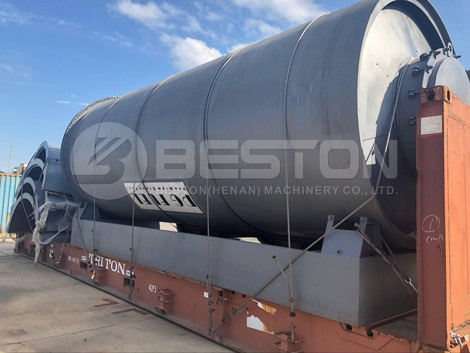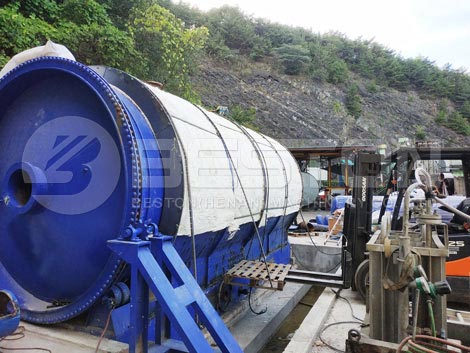Pyrolysis is a process that can be used to produce a variety of fuels and chemicals. In recent years, there has been growing interest in using pyrolysis to produce rubber from scrap tires. Pyrolysis offers several benefits over traditional recycling methods, such as incineration and landfilling. For instance, pyrolysis produces fewer emissions and generates less waste than incineration. Additionally, rubber derived from pyrolysis is a valuable commodity that can be used to produce fuels and chemicals. In this blog post, we will discuss the feasibility of using pyrolysis to produce rubber from scrap tires and the potential benefits of doing so. More information on waste rubber pyrolysis plant here.

The Benefits Of Pyrolysis
Pyrolysis is used in organic chemistry to refer to a type of chemical decomposition characterized by the breakdown of organic compounds into simpler ones under the influence of heat.
Pyrolysis generally occurs under pressure and at temperatures above the melting point of the compound, resulting in vaporization, but can also be performed at lower temperatures depending on the volatility of the compounds. The benefits of pyrolysis include the production of useful products such as gases and oils, as well as the prevention of waste buildup. When combined with other processes, pyrolysis can also be used to clean up hazardous materials. See the tyre pyrolysis plant project report here.
How Is Rubber Produced From Pyrolysis
In the case of rubber, pyrolysis is used to break down the long polymer chains that make up the material. This results in a number of shorter chain hydrocarbons, which can then be used to produce fuel, chemicals, and other materials. While pyrolysis has a number of potential applications, it is most commonly used in the production of synthetic rubber. In this process, large molecules are broken down into smaller ones, which can be used to create new materials with desired properties. This makes pyrolysis an important tool in the rubber industry, as it allows for the production of customized rubber products.
Using Pyrolysis To Produce Rubber From Scrap Tires
The use of pyrolysis to produce rubber from scrap tires has been gaining popularity in recent years. This process involves heating the tires in an oxygen-free environment, which causes them to break down into their component parts. The resulting material can then be used to produce a variety of products, including rubber. Check the tyre to fuel recycling plant here.

There are a number of advantages to using pyrolysis to produce rubber. First, it is a relatively clean and efficient process. It does not require the use of any hazardous chemicals. It can also be used to recycle scrap tires that would otherwise end up in landfills. The products produced by pyrolysis are often of superior quality to those produced by traditional manufacturing methods.
Despite these advantages, there are also a number of challenges associated with using pyrolysis to produce rubber. One challenge is that the process requires high temperatures, which can be difficult to achieve on an industrial scale. Another challenge is that the process can produce harmful emissions if not properly controlled. Finally, the cost of setting up and operating a waste tyre to oil plant can be prohibitive for some companies.
Overall, the use of pyrolysis to produce rubber from scrap tires is a promising technology with a number of potential benefits. Thankfully, technological advancements are now better able to address the issues associated with its large-scale implementation. improved process control and the development of more efficient plant designs are making it possible for pyrolysis to be used more widely in the rubber industry.